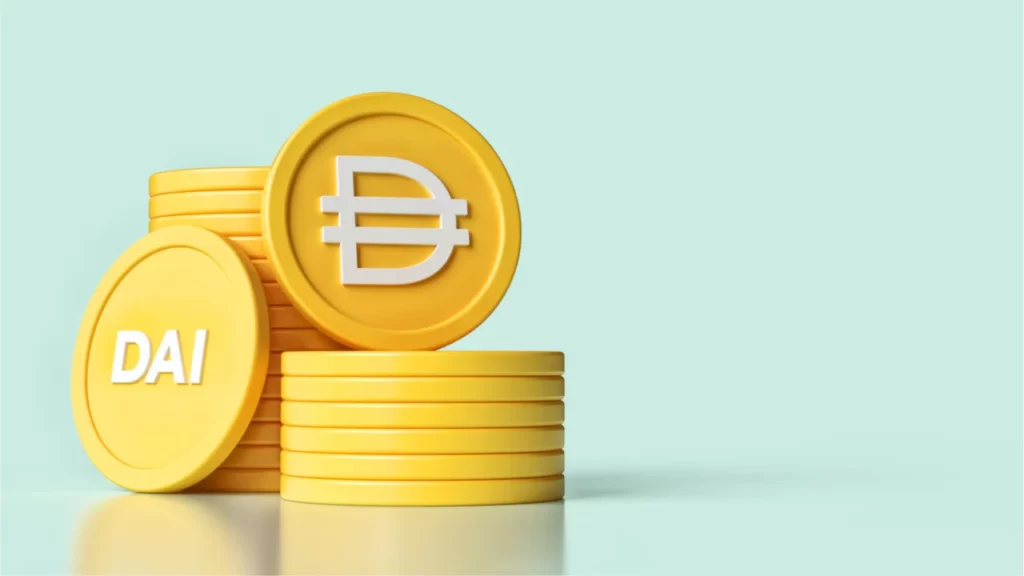In this transformative era, stablecoin integration is crucial in advancing the decentralized internet. This article explores the intersection of Dai and Web 3.0, delving into the significance of stablecoin integration. Open doors to limitless opportunities by reading about WeInvests’ Guide to Best ChatGPT Stocks in 2023 and be ahead of the curve. Try now!
Dai’s Role in Advancing the Decentralized Internet
One of Dai’s critical contributions to the decentralized internet is its ability to facilitate decentralized finance (DeFi) applications. DeFi has gained significant traction in recent years, offering innovative financial services without the need for intermediaries. With Dai’s stable value, DeFi platforms can leverage its integration to enable digital asset borrowing, lending, and trading within a secure and transparent environment.
Moreover, Dai is crucial in enhancing global accessibility and financial inclusion in the decentralized internet. Traditional economic systems often hinder individuals in underserved regions from accessing essential financial services. By utilizing Dai, individuals from anywhere in the world can participate in the decentralized economy, transact securely, and store value without needing a traditional bank account.
Additionally, Dai’s stability addresses a significant challenge traditional cryptocurrencies face in decentralized applications. Price volatility has been a limiting factor for the practical use of cryptocurrencies in day-to-day transactions. However, with Dai’s value pegged to the US dollar through its unique stabilization mechanism, it provides stability and predictability, making it an ideal medium of exchange within dApps.
Furthermore, Dai’s integration in Web 3.0 applications enables efficient cross-platform interoperability. The standardized representation of value that Dai offers allows for seamless integration with various dApps, empowering developers to create innovative solutions that can interact with other applications and protocols within the decentralized ecosystem. This interoperability fosters a collaborative environment and accelerates the growth and adoption of Web 3.0 technologies.
In summary, Dai’s role in advancing the decentralized internet is multifaceted. Its stability, suitability for DeFi applications, global accessibility, and interoperability make it a crucial component of the Web 3.0 ecosystem. By enabling seamless transactions, empowering financial inclusion, and reducing barriers to entry, Dai contributes significantly to the growth and adoption of decentralized technologies, paving the way for a more equitable and decentralized future.
Technical Integration of Dai in Web 3.0 Applications
The technical integration of Dai, a decentralized stablecoin, in Web 3.0 applications involves leveraging intelligent contracts and blockchain technologies to enable seamless and secure interactions with the Dai ecosystem. This integration is crucial in facilitating various functionalities such as decentralized exchanges (DEXs), lending and borrowing platforms, and other decentralized finance (DeFi) applications within the decentralized internet.
Smart contracts, self-executing agreements written in code, are at the core of Dai’s technical integration. These contracts are deployed on blockchain networks, such as Ethereum, and serve as the foundation for creating and managing Dai tokens. By using smart contracts, developers can define the rules and conditions for the issuance, transfer, and redemption of Dai, ensuring transparency and trustworthiness.
Decentralized exchanges (DEXs) represent a crucial aspect of Dai’s technical integration. DEXs enable peer-to-peer trading of digital assets without the need for intermediaries. By integrating Dai into DEXs, users can seamlessly exchange Dai with other cryptocurrencies or tokens, allowing for liquidity and efficient price discovery within the decentralized market.
Another critical aspect of the technical integration is the utilization of Dai in lending and borrowing platforms within the DeFi space. These platforms, often called decentralized lending protocols or money markets, enable individuals to lend their assets and earn interest or borrow assets by collateralizing their existing holdings. Dai’s stability and transparency make it an ideal collateral option within these platforms, providing a reliable asset for borrowers and a stable revenue stream for lenders.
Furthermore, the technical integration of Dai in Web 3.0 applications involves the utilization of decentralized Oracle networks. Oracles bridge the blockchain and real-world data, providing the necessary information for smart contracts to execute their functionalities accurately. In the case of Dai, oracles play a crucial role in maintaining the stability of the stablecoin by feeding price information from external sources to ensure the peg to the US dollar.
Conclusion
Integrating Dai, a decentralized stablecoin, in Web 3.0 applications holds immense potential for advancing the decentralized internet. With its stability, interoperability, and facilitation of decentralized finance, Dai plays a pivotal role in shaping the future of a more inclusive and efficient decentralized economy. As Web 3.0 continues to evolve, Dai’s impact will be instrumental in driving the adoption and transformative power of the decentralized internet.
